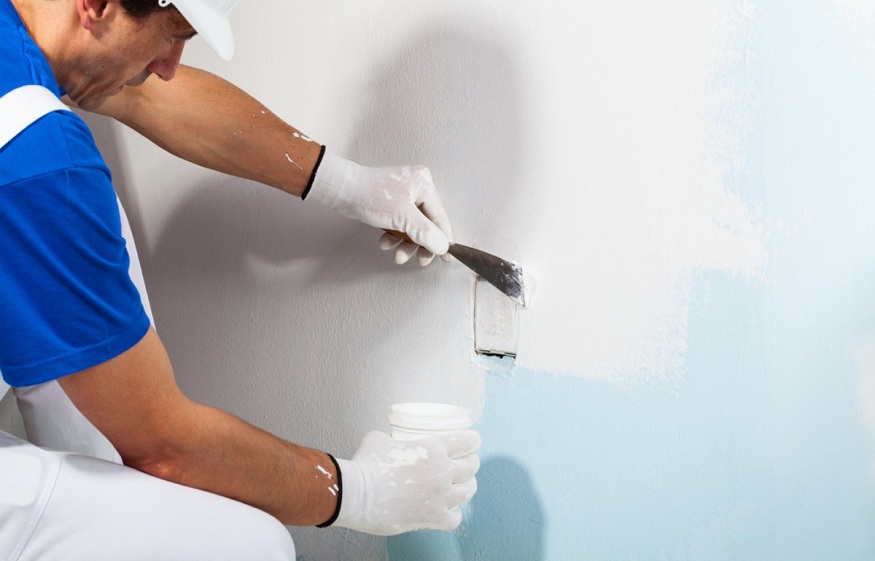
Understanding the Different Types of Wall Putty for Your House Painting Needs
When it comes to house painting, selecting the right wall putty is a crucial step in achieving a smooth and flawless finish. Wall putty is a versatile and essential material used in the field of house painting and surface preparation. It acts as a preparatory coat applied to walls and ceilings before the final paint application. The primary purpose of wall putty is to create a smooth and even surface, filling in minor imperfections, cracks, and unevenness. This crucial step ensures that the paint adheres well to the surface, resulting in a flawless and long-lasting finish. In this blog post, we will explore the different types of wall putty available in the market and their specific uses, helping you make an informed decision for your painting needs.
| IN THIS ARTICLE
Types of Wall Putty 1. White Cement-based Wall Putty 2. Acrylic Wall Putty 3. Polyester and Epoxy Putty |
Types of Wall Putty
1. White Cement-based Wall Putty
White cement-based wall putty is a widely used and popular choice among homeowners and professionals alike. It is composed of white cement, finely ground limestone, and polymer additives. This type of putty offers several advantages:
- Superior Adhesion: White cement-based wall putty has excellent adhesion properties, ensuring a strong bond between the wall and the paint, which enhances the paint’s longevity.
- Crack Resistance: It effectively fills hairline cracks and minor imperfections, ensuring a smooth and even surface for painting.
- Breathability: White cement-based wall putty allows the wall to breathe, preventing moisture retention and mold growth.
- Suitable Applications: This type of putty is ideal for interior and exterior surfaces, including concrete, plaster, and brick walls.
2. Acrylic Wall Putty
Acrylic wall putty is a modern alternative to traditional cement-based putty. It is a water-based putty that contains acrylic resins and fillers. Some of the key features of acrylic wall putty include:
- Quick Drying: Acrylic putty dries relatively faster than cement-based putty, reducing the waiting time between coats and speeding up the painting process.
- Flexibility: It has good flexibility, which allows it to withstand minor movements in the walls without cracking.
- Effortless Application: Acrylic wall putty is easy to apply and can be used on both interior and exterior surfaces.
- Recommended Applications: Acrylic putty is particularly suitable for areas that require frequent cleaning, such as kitchens and bathrooms, as it is more resistant to moisture and stains.
3. Polyester and Epoxy Putty
Polyester and epoxy putty are specialty types of wall putty used in specific situations or projects. They have distinct properties that set them apart from cement-based and acrylic putty:
- High Strength: Polyester and epoxy putty offer exceptional strength and are often used for repairing deep cracks, holes, or damaged surfaces.
- Waterproofing: These putties provide effective waterproofing properties, making them suitable for damp areas like basements and exterior walls.
- Versatility: Polyester and epoxy putty can be used on various surfaces, including metal, wood, and concrete.
- Specialized Uses: They are commonly used in industrial applications and projects that require heavy-duty repairs.
Choosing the right wall putty is essential for achieving a flawless and long-lasting paint finish. Each type of putty has its unique advantages and recommended applications, catering to different needs and scenarios. White cement-based wall putty offers excellent adhesion and crack resistance, while acrylic putty provides quick drying and flexibility. Polyester and epoxy putty, on the other hand, are specialized options used for heavy-duty repairs and waterproofing.
So when selecting the appropriate wall putty for your house painting needs, consider factors such as the surface type, the location (interior or exterior), and the desired finish. Consulting with painting professionals can provide valuable guidance and advice on the best type of putty for your specific project. By making an informed choice and using the right wall putty, you can ensure a smooth and impeccable paint job that enhances the beauty and durability of your walls.


